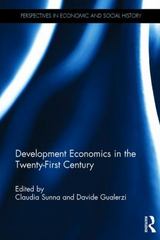Question
In overpopulated developing countries, a majority of the people work in the rural agrarian and the urban informal work sector. This is partly because of
In overpopulated developing countries, a majority of the people work in the rural agrarian and the urban informal work sector. This is partly because of a lack of opportunities in the formal areas of the economy.
W. Arthur Lewis, economics Nobel Laureate in 1979, claimed in an article in 1954, that such sectors in less developed countries are characterized by "surplus" labor where the workers are working but for practical purposes, it is all 'make work and the workers are really disguisedly unemployed", i.e., family farms and businesses are simply
"employing" people for the sake of employing people and that most of the workers are not really productive from a "marginal" standpoint (hence the term "surplus" labor).
He went on to argue that if there was a big push for industrialization in the urban areas, this vast pool of 'surplus labor' could be tapped, without necessarily reducing output in the farm sector, and will increase production in the formal urban manufacturing sector via increased labor intensive manufacturing (a true win - win).
For the sake of simplicity, assume a representative farm in a typical low-income country with large pools of workers. The single product grown in corn. Up to a level of labor being employed,, LO, total production (O) of Corn follows a typical shape as described by LDMR. After L0 number of workers, up to a level of workers hired, L1, the labor is called "Surplus Labor" or "Disguised Unemployed" as per Lewis definition.
- What can you say about the Marginal Product of Labor below LO, then from LO to L1, then past L1? You may assume that L is the only factor of production, and that Capital and Land are fixed inputs.
- What can you say about the Law of Diminishing Marginal Returns in this context? Show graphically. ( draw on paper)
Step by Step Solution
There are 3 Steps involved in it
Step: 1

Get Instant Access to Expert-Tailored Solutions
See step-by-step solutions with expert insights and AI powered tools for academic success
Step: 2

Step: 3

Ace Your Homework with AI
Get the answers you need in no time with our AI-driven, step-by-step assistance
Get Started


